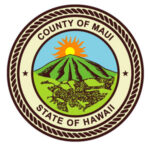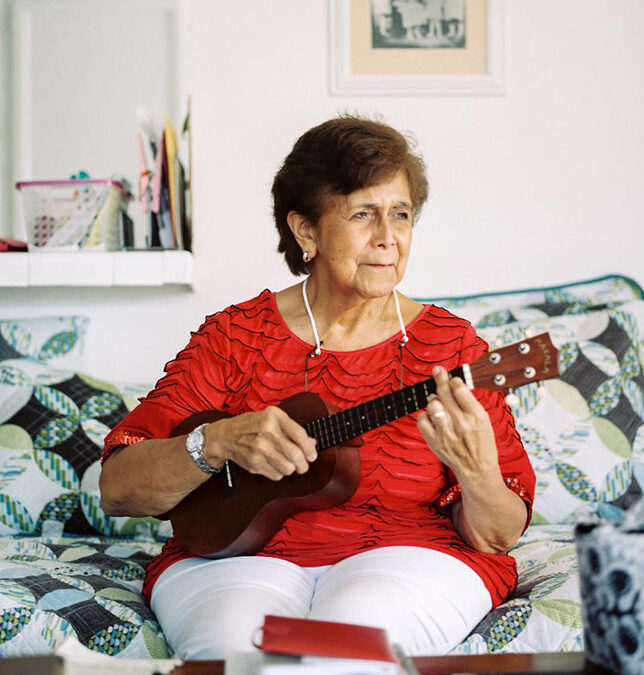
Sep 23, 2020 | Community
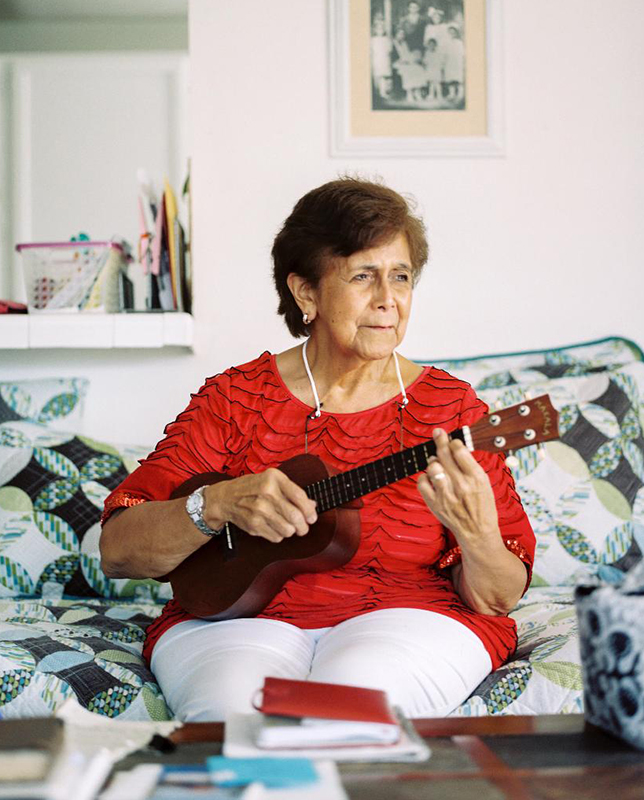 Gabe Amey, founder and director of Our Kūpuna, is concerned about Hawaii’s elderly. “During the deadliest global pandemic our generation has ever seen, I asked myself, how can I help?” said Amey. “This service is that answer. Our Kūpuna was developed to serve a need in the community during a very uncertain time we know as Covid-19. It was launched statewide on March 23, 2020 as a community project started by the team behind Hawaii VA Loans and RISEHI Collective. As an official 501(c)3 nonprofit organization under Hawaii VA Foundation, The mission of Our Kūpuna is to connect Hawaii’s elderly with volunteer sponsors to help them with their daily needs during the pandemic.
Gabe Amey, founder and director of Our Kūpuna, is concerned about Hawaii’s elderly. “During the deadliest global pandemic our generation has ever seen, I asked myself, how can I help?” said Amey. “This service is that answer. Our Kūpuna was developed to serve a need in the community during a very uncertain time we know as Covid-19. It was launched statewide on March 23, 2020 as a community project started by the team behind Hawaii VA Loans and RISEHI Collective. As an official 501(c)3 nonprofit organization under Hawaii VA Foundation, The mission of Our Kūpuna is to connect Hawaii’s elderly with volunteer sponsors to help them with their daily needs during the pandemic.
Unfortunately, not all seniors in Hawaii have ‘ohana on-island to look out for them during these exceedingly difficult times. After orders for residents in the state to stay at home, many kūpuna were isolated, and everyday tasks, such as getting groceries, prescriptions, and other chores have become impossible for them to do alone.
“We are currently serving over 300 kūpuna, 65 years and older, on five islands and we want to get the word out more about Our Kūpuna,” Amey stated. “We need more volunteers. Our staff members do the screening and manage the volunteers. If everything works out, we connect them to kupuna in the area. Our motto, ‘one-to-one’, creates a special relationship with our network of volunteers in the field and the kūpuna they are helping.”
Amey emphasized, “We cannot help everyone, but everyone can help. Kūpuna do not have to pay for this service. It is free. All volunteers and sponsors are doing this to help in the community because so many seniors do not have family on island. The sponsor calls their kūpuna weekly to see if they need any necessary supplies so seniors can stay home. The main purpose of the volunteer service is to ensure kūpuna do not have to battle crowds at the grocery stores or struggle to get to other public places. It is about making sure the elderly have what they need without putting themselves at risk.”
Kūpuna, let us take care of you! For more information visit OurKupuna.com or call (808) 400-4506.
Gabe Amey, Our Kūpuna, Founder and Director
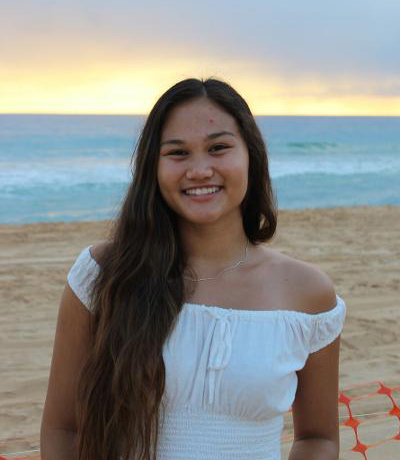
Sep 16, 2020 | Education, Stemworks
 Due to COVID-19, Maui Economic Development Board’s (MEDB) STEMworks™ Summer Internship team strived to personalize work-based learning experiences for students in the new virtual dimensions. They collaborated with internship host companies and community partners to give the students a unique opportunity to explore technical and professional development.
Due to COVID-19, Maui Economic Development Board’s (MEDB) STEMworks™ Summer Internship team strived to personalize work-based learning experiences for students in the new virtual dimensions. They collaborated with internship host companies and community partners to give the students a unique opportunity to explore technical and professional development.
STEMworks Intern Napua Canales, 12th grade, said, “My internship was with BizzyB, a branch of Bizgenics Foundation, a nonprofit organization that fosters creativity, innovation, and entrepreneurship. Specifically, BizzyB is a student innovation platform, where students 13 and older can create market-ready innovation through project-based learning. Our goal as BizzyB interns was to make a project template that other students around the world could use as a guide towards creating their own projects.”
Steve Sue, Bizgenics CEO and STEMworks mentor, explained, “Along with eight other 2020 BizzyB Summer Cohort members, Canales created a first-of-its-kind online project-based curriculum for BizzyB.com. Each student author created a project kit and teaching system for one of the United Nation’s 17 Sustainable Development Goals (SDGs). Canales is the primary author of SDG 11: Sustainable Cities and Communities. These curriculum kits will be featured in the BizzyB application and thus available to the world. Research, writing, graphics and videos are all part of curriculum authoring. This internship is proving that students are more capable and relevant than ever toward reshaping education. As a student voice project, we are clearly seeing that curriculum by students for students is a powerful new paradigm worth exploring. I believe it is part of the future of education. Information technology has changed access to information and perhaps more importantly, gives students more leverage to have larger impact earlier in life.”
BizzyB discovered that the students are really excellent at online research, and they have proven to be highly resourceful in finding content like video clips and authoritative sources that can be integrated in their teaching materials. Canales reflected, “Not only has the internship itself been a great learning experience on how educators create project lessons, we were also given a great learning opportunity on how to improve our work ethic through professional development.”
The summer interns became curators of content and creative coaches with goals of challenging and inspiring others to act while learning.
Napua Canales, STEMworks™ Summer Intern
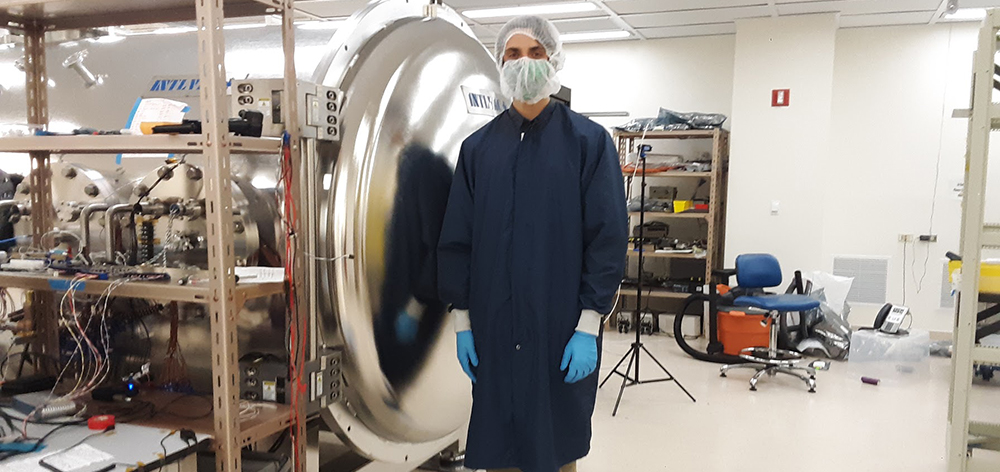
Sep 9, 2020 | Education, Stemworks
College freshman Ethan Covello completed his Maui Economic Development Board (MEDB) STEMworks™ Summer Internship at the Hawai’i Space Flight Laboratory (HSFL). The mission of HSFL is to promote space engineering and scientific research. They develop, launch, and operate small spacecraft from the Hawaiian Islands to accelerate the validation of new space technologies. HSFL also promotes synergistic collaborations between educational, governmental, and corporate institutions interested in space exploration.

Amber Imai, HSFL avionics engineer and STEMworks mentor, said, “Covello worked on creating a deployable ultra-high frequency amateur radio antenna for our Artemis CubeSat kit, which will serve as a platform for community college and undergraduate students to access space at a lower cost. Much of Covello’s work has been to create a design on SolidWorks and to 3D print the prototype. The previous design has proved to be unreliable due to its simplicity and Covello helped create something that is robust and reliable using a different method to deploy the antenna. We thank MEDB for the opportunity to work with such talented interns this summer!”
Covello explained, “I worked with several engineers and fellow interns to design the mechanical and structural aspects of the model satellite. I started this process by creating a Solidworks model of the deployer, then 3D printed my prototype to check for issues with my design and tested the deployer’s compatibility with the structure. After that, I detailed my findings and developed a new design that would fix the previous design’s flaws. My deployment system works through a gate system in which the antenna was attached. The gate keeps the antenna coiled into the base of the deployer using a nylon string. This string is attached to a resistor and when the resistor is activated the string melts, releasing the gate which releases the antenna.”
Reflecting on his internship Covello said, “Through working with seasoned engineers who guided me through using complex machinery and software, I was able to gain a new understanding of what being an engineer means. I will carry these new skills with me throughout my undergraduate education and continue to develop these skills to help prepare for a future career in mechanical engineering.”
My STEMworks Internship allowed me to develop my passion for engineering. Thank you MEDB!
Ethan Covello, STEMworks™ Summer Intern
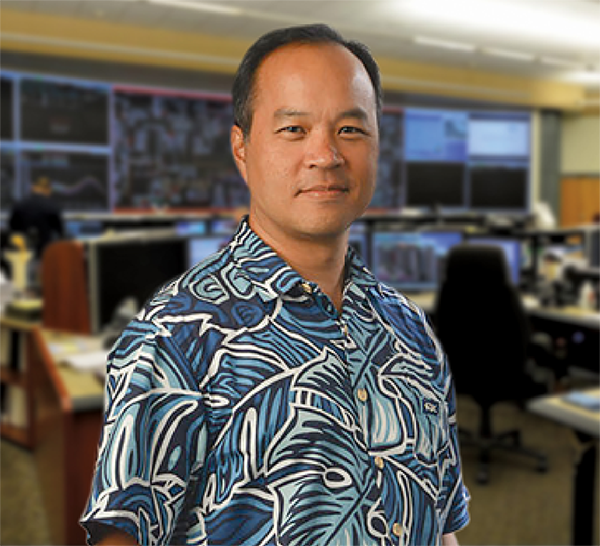
Sep 2, 2020 | Environment, Events, Small Business
 The 2020 Hawaii Energy Conference (HEC), postponed in March due to Covid-19, aired in July with a live-stream virtual event. Presented by the Maui Economic Development Board (MEDB) and supported by the Mayor’s Office of Economic Development, the conference welcomed over 600 participants from 24 different states and Puerto Rico. “An exciting feature this year was our international participation,” said Leslie Wilkins, MEDB President and CEO. “Six countries joined us, spanning time zones from Europe to Asia.”
The 2020 Hawaii Energy Conference (HEC), postponed in March due to Covid-19, aired in July with a live-stream virtual event. Presented by the Maui Economic Development Board (MEDB) and supported by the Mayor’s Office of Economic Development, the conference welcomed over 600 participants from 24 different states and Puerto Rico. “An exciting feature this year was our international participation,” said Leslie Wilkins, MEDB President and CEO. “Six countries joined us, spanning time zones from Europe to Asia.”
One of the nation’s leading energy conferences, the HEC brought together experts on energy policy, strategies, leadership, and innovation to focus on how the energy sector should respond to the challenges imposed by the pandemic. The program included four panels plus brief video presentations with information related to the theme, ‘Imagining a Just Recovery: What would that look like for the grid?’
Jennifer Potter, Commissioner of the Hawaii Public Utilities Commission, and member of the conference program committee said, “The HEC has regrouped at a critical time for Hawaii and our country. The incredible macroeconomic stress and individual financial burdens across our nation mean that there is no better time to have dialogue on affordability and equity. Building a recovery plan that includes all socioeconomic groups is imperative.”
In his keynote, Scott Seu, President and CEO of Hawaiian Electric Company, explained, “It is not enough anymore to simply say we will all benefit from cleaner, cheaper renewables someday. The duration and the depth of our current economic downturn is unlike anything we have ever experienced, so someday is not soon enough. The leaders of Hawaiian Electric are looking at what bold strategies we can use to benefit the most people, the most quickly. Equity, opportunity, and participation are as important for our successful transition to renewable energy as any field source or technology.”
Seu added, “I have challenged myself and my team to think outside of our traditional role of keeping the lights on; to be bold, creative, and come up with ideas, such as a community solar program, that will strengthen our economy; to be the better Hawaii we can all imagine.”
The renewable energy transformation must include everyone. That is what equity looks like to me. Then, no one gets left behind.
Scott Seu, Hawaiian Electric Company, President and CEO
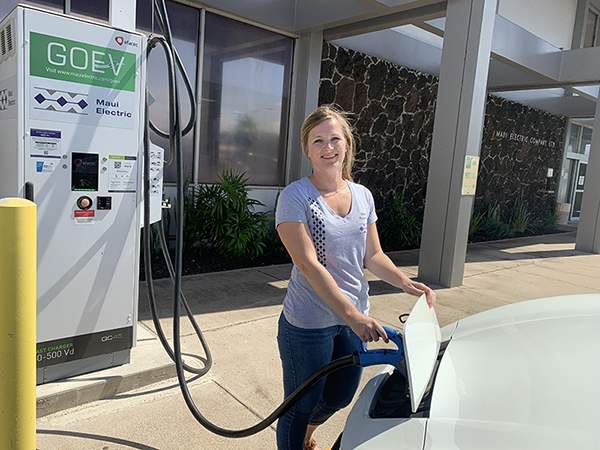
Aug 26, 2020 | Community
 On August 1, 2020 Hawaiian Electric Company moved forward with the ownership and operation of the existing EVohana network on Maui, which has been temporarily owned and operated by Maui Economic Development Board (MEDB). The EVohana charging sites were initially established as part of the JUMPSmartMaui demonstration project, a cooperative venture between, Japan, Hawaii, Maui, MEDB, Hitachi, and Hawaiian Electric. The pilot project operated from 2011 to 2017 to exhibit smart grid technologies that could enable the efficient use of renewable energy on an island grid.
On August 1, 2020 Hawaiian Electric Company moved forward with the ownership and operation of the existing EVohana network on Maui, which has been temporarily owned and operated by Maui Economic Development Board (MEDB). The EVohana charging sites were initially established as part of the JUMPSmartMaui demonstration project, a cooperative venture between, Japan, Hawaii, Maui, MEDB, Hitachi, and Hawaiian Electric. The pilot project operated from 2011 to 2017 to exhibit smart grid technologies that could enable the efficient use of renewable energy on an island grid.
“MEDB has been grateful for the longstanding partnerships and dedication of our EVohana members,” said Leslie Wilkins, MEDB President and CEO. “You were the pioneers in adopting electric vehicles (EVs) in our community. Thank you for helping move us forward towards our clean-energy goals. We appreciate Hawaiian Electric for ensuring our island continues to have access to reliable public fast-charging options for EV drivers, and for planning to replace four sites with new systems. Without Hawaiian Electric taking on some of these sites, the entire EVohana charging network would have been retired earlier this year.”
Sharon Suzuki, President of Hawaiian Electric’s Maui County and Hawai’i Island Utilities, said, “Mahalo to the EVohana members and partners MEDB, Ulupono Initiative, and the County of Maui for helping to advance clean transportation on Maui through this EV charging program. With the retirement of the EVohana Program, we remain committed to bringing as many as four new public fast-charging sites online later this year.”
EVohana member Damon Glastetter added, “The project coordinated by MEDB was an important test of how electric vehicles and renewable energy will impact Maui and the planet in the near future and beyond. When the project started EVs were a novelty. Fast-charging was predicted to overwhelm the grid, and solar photovoltaic (PV) power was not as ubiquitous as we see now. I was happy to be involved with Phase 1 and Phase 2 of the project, with my EV sending power back to the grid during peak demand hours. I look forward to a clean-energy future with more EVs and more PV.”
Maui has taken a leading role in the world adopting clean energy and this project is a major reason for that leadership. Thank you MEDB for your leadership in the EVohana.
Damon Glastetter, Solar-HI Maui, Jackson Electric, LLC
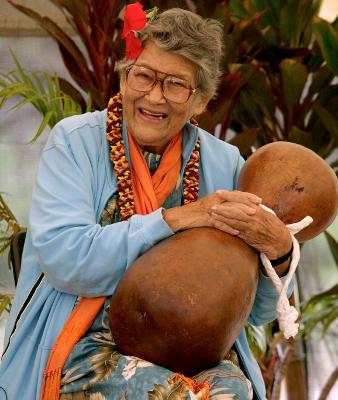
Aug 19, 2020 | Community, Sustainability
 On Thursday August 27 at 9:00 pm, PBS Hawai’i will present the world premiere of Hawaiiana, a new documentary about the late Winona Kapuailohiamanonokalani Desha Beamer, or Aunty Nona as she was fondly called. Credited with coining the term Hawaiiana as early as 1949, Aunty Nona used it to describe the absolute best of all things Hawaiian: the people, their knowledge, culture, wisdom, and aloha. Keola Beamer, Aunty Nona’s oldest son, assisted by his wife Moanalani and veteran Maui-based filmmaker Tom Vendetti, made the documentary about the well-known and much loved Hawaiian heroine who is renowned for her integrity, scholarship, and love.
On Thursday August 27 at 9:00 pm, PBS Hawai’i will present the world premiere of Hawaiiana, a new documentary about the late Winona Kapuailohiamanonokalani Desha Beamer, or Aunty Nona as she was fondly called. Credited with coining the term Hawaiiana as early as 1949, Aunty Nona used it to describe the absolute best of all things Hawaiian: the people, their knowledge, culture, wisdom, and aloha. Keola Beamer, Aunty Nona’s oldest son, assisted by his wife Moanalani and veteran Maui-based filmmaker Tom Vendetti, made the documentary about the well-known and much loved Hawaiian heroine who is renowned for her integrity, scholarship, and love.
“My mother is a lifelong teacher of helping to nurture the love of hula and mele in Hawai’i, and her legendary wisdom continues to spread much needed aloha around the world,” said Keola, a Hawaiian slack-key guitarist and Grammy Award nominee. “She was a revered Hawaiian cultural treasure and is warmly remembered by thousands of her students. When Moanalani and I think of her many contributions, we are filled with gratitude. Her existence on this earth was a blessing to all.”
Vendetti said Beamer, his dear friend, asked him to do the project. “Even though there have been other films made about her, with basically people talking about her, this film is focused on Aunty Nona telling her own story, along with family members,” Vendetti explained. “After hearing Aunty Nona’s definition of Hawaiiana, I thought it would make a wonderful title for the film, as she explores, in her own words, the journey of her life and her fight toward preserving, perpetuating and creating awareness of Hawaiian culture. I was truly touched and honored to take on the project, which will also be distributed this Fall around the nation and beyond by American Public Television.”
Vendetti reflected, “Aunty Nona is still well-known as a pioneer, ali’i, musician and a humanitarian. Her wisdom of spreading aloha around the world is something that everyone should hear. Considering the current cultural issues that we are confronting, I think her message will resonate and offer hope for the world. She was truly a Lady of Aloha.”
Aunty Nona was the granddaughter of Helen Desha Beamer and cousin to Hawaiian Music Hall of Fame inductee Mahi Beamer.
Tom Vendetti, Maui-based Filmmaker
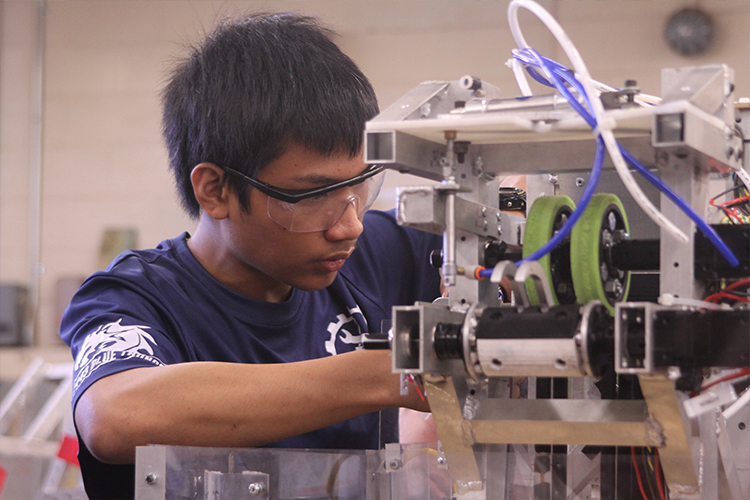
Aug 12, 2020 | Education, Stemworks
 Maui Economic Development Board (MEDB) has announced the kick-off of their first-ever online STEM Drive, a benefit for the 2020 Ke Alahele Education Fund. The fundraiser began on July 17 and runs through August 15. Contributions are 100 percent tax deductible. Donations go towards advancing MEDB’s STEM (science, technology, engineering, mathematics) programs from kindergarten to careers. The Ke Alahele Fund enables educational pathways that benefit the lives of our residents in Maui County and statewide. MEDB’s programs, which are founded on a respect for Hawai’i’s culture and precious environment, create vehicles for community and industry participation and partnerships in achieving educational goals.
Maui Economic Development Board (MEDB) has announced the kick-off of their first-ever online STEM Drive, a benefit for the 2020 Ke Alahele Education Fund. The fundraiser began on July 17 and runs through August 15. Contributions are 100 percent tax deductible. Donations go towards advancing MEDB’s STEM (science, technology, engineering, mathematics) programs from kindergarten to careers. The Ke Alahele Fund enables educational pathways that benefit the lives of our residents in Maui County and statewide. MEDB’s programs, which are founded on a respect for Hawai’i’s culture and precious environment, create vehicles for community and industry participation and partnerships in achieving educational goals.
“For the past 13 years, our community has gathered for our annual Ke Alahele Education Fund benefit dinner to support STEM education in Hawaii,” said Leslie Wilkins, MEDB President and CEO. This year, due to COVID-19, we will not be scheduling our in-person gala. However, the public can still make a difference in the lives of our keiki by donating to our STEM Drive.”
Since the Fund was launched in 2006, MEDB’s STEM programs continue to empower students and teachers across the state. To date, 344 grants have provided STEM equipment, robotics programs, media labs, environmental/sustainability projects, internships, training for teachers, and more. A variety of sponsorship opportunities are also available which include publicity on the event’s website and social media. This website, www.MEDBpathways.com., also includes information about the Ke Alahele Education Fund── inspiring stories of those who have benefited from MEDB’s STEM programs, and highlights of STEM Week in Maui County.
Wilkins noted, “Jobs today and in the future depend on the preparation of our students in critical thinking, communication, problem solving, collaboration, and creativity — all skills nurtured by STEM education. The Ke Alahele Education Fund was created to provide STEM tools for our youth and educators in an effort to open doors to exciting career opportunities. We extend a big mahalo to all those who support our Ke Alahele Education Fund. It’s truly an investment in our youth, one that will help to shape our communities and our world.”
Donations can be made online or by mailing a check to Maui Economic Development Board, at 1305 N. Holopono St #1, Kihei, HI 96753. To donate, please visit the MEDB STEM Drive website, www.MEDBpathways.com.
Leslie Wilkins, MEDB Presidentand CEO
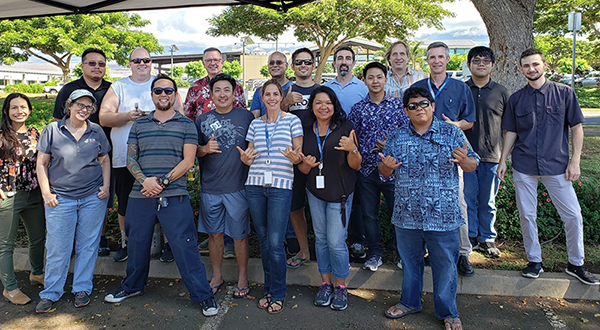
Aug 5, 2020 | Community, Small Business
Exciting projects, industry-best benefits and flexible working arrangements are a few of the reasons that Kihei-based Centauri was recently named a 2020 Hawai’i Best Place to Work by Hawaii Business Magazine. Centauri is a technology company providing high-end, creative software and engineering solutions to critical national security missions across space, cyber, missile defense and intelligence domains.

Although headquartered in Chantilly, Virginia, Centauri has a long-standing office in Kihei. The nearly 50 employees in Kihei support federal government customers in high-tech areas such as space domain awareness. Centauri’s corporate strategy brings together top experts in STEM fields (science, technology, engineering, mathematics), as well as intelligence operations and analysis.
“There is a sense of energy, drive, pride in accomplishment and commitment in the work at Centauri,” said Daron Nishimoto, Centauri Director of Advanced Technologies. “Our pervasive culture of excellence in all that we do defines who and what we are, as we focus on the important missions of our customers. Because our employees are our most valuable asset, we have built a company that recognizes the achievements of our team members.”
Centauri offers career opportunities and paid military leave for both veterans and their spouses, which is why more than 35% of employees are veterans. “For many veterans, the Centauri culture embodies a comparable sense of camaraderie and values instilled in the armed forces,” said Nishimoto. “We do work that matters on cutting-edge technologies critical to our nation.”
Centauri’s flexible work environment allows employees to be in charge of their hours, allowing them to accomplish their work on their own schedule so they do not have to sacrifice important appointments, school events or family needs. As for benefits, the company offers a high-match 401k and a selection of generous healthcare packages including medical, prescription drug, dental and vision, flexible spending accounts, life insurance, and survival support. Employee charitable contributions are matched, and stipends for continuing education are provided.
“Everyone in Kihei, and even those reporting into Hawaii from the continental US, genuinely enjoy working with us,” said Nishimoto. “Ultimately, our workplace culture of excellence defines our success and makes Centauri a Best Place to Work in Hawaii.”
At Centauri, we have been recognized by major nationwide and local awards programs. Presently, we are welcoming 2020 Summer Interns to our first-ever virtual program.
Daron Nishimoto, Centauri Director of Advanced Technologies
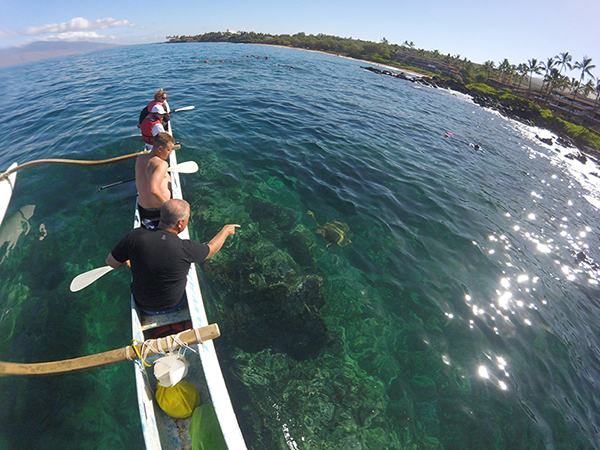
Jul 29, 2020 | Community

Hawaiian Paddle Sports
Kama’aina First, an exciting program supported by the County of Maui Office of Economic Development (OED), brings our local community together, to kokua one another, during these unprecedented times of COVID-19. This is an opportunity for Maui County businesses to share their kama’aina deals at no cost; for locals to take advantage of great discounts on staycations, meals, services, products; and, best of all, to show aloha for our islands’ businesses and ‘ohana.
“The Kama’aina First program is kick-starting our island economy by supporting employment and circulating dollars right here at home.,” said Maui Mayor Michael Victorino. “By providing a platform for local businesses to offer discounts and great deals to our local residents we help our friends, neighbors and community.”
OED Director JoAnn Inamasu said, “The support of the Kama’aina First program has been incredible. Since its launch on June 1st, we have nearly 500 local businesses participating in the program, with special offers and vendor applications still being submitted. We are looking for a great deal and our community has risen to the challenge of supporting our local businesses in this time when they need our help to remain in business. It is all about ‘Locals supporting locals’!”
Residents are being encouraged to stay on island and continue to support local businesses. The program is open to all County of Maui companies and residents. There is no cost to participate in the program, and the County of Maui shares offers with the residents via the website and Kama’aina First Facebook and Instagram pages.
Mayor Victorino summed it up by saying, “This allows our residents to enjoy our islands first, as we fully adjust to the new normal. Life has changed drastically for our kama’aina and we look forward to businesses offering them the chance to enjoy unique deals and experiences. Because updates are made daily, we encourage folks to visit these online resources often. We extend a big mahalo to all our locals who continue to help each other during these challenging times. I urge everyone to regularly check the www.KamaainaFirst.com website for new deals.”
With the moratorium lifted on interisland travel, both the KamaainaFirst.com website and Facebook group offer the perfect opportunity to try a variety of experiences, products, and services on the islands of Maui, Molokai, and Lanai.
Michael Victorino, Maui County Mayor
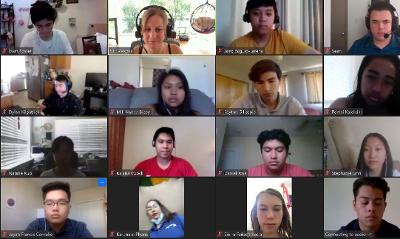
Jul 22, 2020 | Education, Stemworks
Maui Economic Development Board’s STEMworks™ Internship Program inspires the next STEM (science, technology, engineering, mathematics) generation. Under the internship program, students in grades nine through college have a unique opportunity to explore technical and professional development, and gain confidence in their ability to be a STEM professional. STEMworks™ emphasizes connecting the dots among curriculum, software tools available in the classroom, and real world applications. Interns will gain valuable on-the-job skills while being able to network with industry professionals; a win-win outcome.
“This year, due to COVID-19, the STEMworks™ team worked hard to personalize work-based learning experiences in the new virtual dimensions,” said Katie Taladay, STEMworks™ Program Manager. “We collaborated with internship host companies and our community partners to help reshape the plan for this year’s program. The summer internship, held virtually for four weeks instead of the standard six weeks, will provide interns with the opportunity to use industry-standard technologies to complete projects. Additionally, the interns participate in weekly webinars to help them develop college preparatory and career skills.”
“STEMworks™ Intern Peyton Gillespie said, “The STEMworks™ Summer Internship team has brought together a wide variety of organizations and students from almost every island. I am looking forward to my third year participating in the program. Despite the unprecedented circumstances and the internships being moved online, I am confident that we are going to have just as productive a year as any other. We launched this year’s event with a virtual kickoff, introducing us to the online format, details of our individual internships, and an overall opportunity to learn about various STEM careers.”
Gillespie added, “For the past two years, I interned on Molokai at Keawanui Fishpond working in natural resource management and preservation of a cultural site. I built on my leadership, teamwork, agriculture, aquaculture, and resource management skillsets, not to mention the network I built both working at the Fishpond and with the STEMworks™ team. This year, I will be the liaison between the STEMworks™ interns and the staff. I am looking forward to following the other interns on their paths as well.”
The STEMworks™ team efficiently moved the program online and I am excited to take part in this new kind of intern experience.
Peyton Gillespie, STEMworks™ Intern

 Gabe Amey, founder and director of Our Kūpuna, is concerned about Hawaii’s elderly. “During the deadliest global pandemic our generation has ever seen, I asked myself, how can I help?” said Amey. “This service is that answer. Our Kūpuna was developed to serve a need in the community during a very uncertain time we know as Covid-19. It was launched statewide on March 23, 2020 as a community project started by the team behind Hawaii VA Loans and RISEHI Collective. As an official 501(c)3 nonprofit organization under Hawaii VA Foundation, The mission of Our Kūpuna is to connect Hawaii’s elderly with volunteer sponsors to help them with their daily needs during the pandemic.
Gabe Amey, founder and director of Our Kūpuna, is concerned about Hawaii’s elderly. “During the deadliest global pandemic our generation has ever seen, I asked myself, how can I help?” said Amey. “This service is that answer. Our Kūpuna was developed to serve a need in the community during a very uncertain time we know as Covid-19. It was launched statewide on March 23, 2020 as a community project started by the team behind Hawaii VA Loans and RISEHI Collective. As an official 501(c)3 nonprofit organization under Hawaii VA Foundation, The mission of Our Kūpuna is to connect Hawaii’s elderly with volunteer sponsors to help them with their daily needs during the pandemic.








